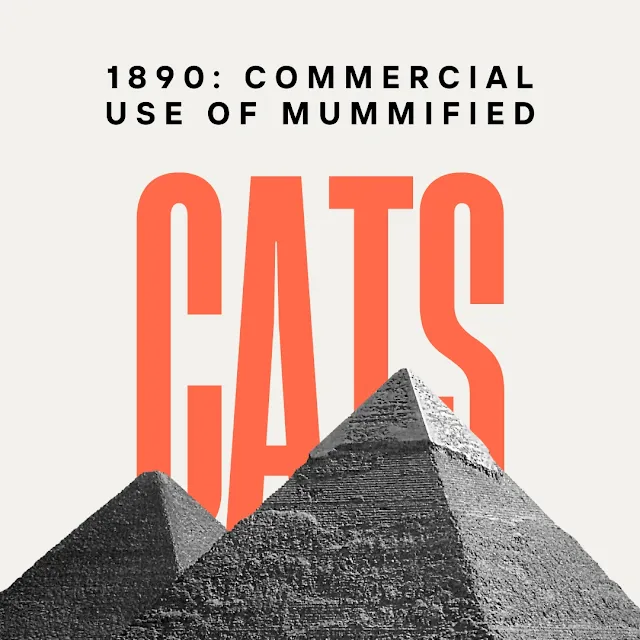Below the infographic I briefly touch on the ancient Egyptian paradox of both admiring and respecting the cat while abusing the animal. And other animals all in the name of worshipping the Gods and asking for favours. They were a very superstitious race. Many people still are. 😢😉
-------------------
The ancient Egyptians had a deep admiration for cats, considering them sacred animals. Cats were valued for their ability to protect homes and granaries by hunting mice, rats, and snakes, which helped safeguard food supplies. Over time, cats became associated with divine protection and were linked to the goddess Bastet, who was the goddess of home, fertility, and protection, often depicted as a lioness or a woman with a cat's head.
The reverence for cats was so strong that they were often mummified and buried with their owners, and killing a cat—even accidentally—was punishable by death. Cats also featured in Egyptian art and religious rituals, showing how highly they were regarded.
This admiration contributed to the spread of domestic cats throughout the world, as they became popular trade goods and companions for many cultures.
Paradoxically, while the Egyptians deeply revered cats, they also bred them specifically for sacrificial purposes. This practice emerged alongside the religious veneration of Bastet, the feline goddess of home, fertility, and protection. Worshippers would offer mummified cats as votive offerings at her temples, hoping to gain the favour of the goddess.
Archaeological evidence suggests that during certain periods, particularly from around 600 BCE onwards, there were large-scale breeding facilities dedicated to raising cats for this very purpose. Once these cats were killed (often humanely, though not always), they were mummified and offered in temples as a means of devotion. Millions of cat mummies have been found in Egypt, particularly in Bubastis, the center of Bastet worship, and other major temple sites.
While the act of breeding cats for sacrifice might seem contradictory to their revered status, it fits within the broader context of Egyptian religious practices, where offerings to gods—whether food, animals, or objects—were a fundamental way to show devotion. The cat's sacred status didn't prevent this practice, but rather made them more suitable for offerings to please Bastet and other deities. This juxtaposition illustrates the Egyptians' unique blend of spiritual reverence and ritual practices.
It was not just cats that were abused. Eight million jackals where offered to the Gods as mummies and buried in cemeteries in Egypt. It was mass slaughter.
-----------------


No comments:
Post a Comment
Your comments are always welcome.